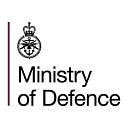NATO’s winged warriors
As NATO guards the Baltic skies, an unusual alliance between man and bird forges a safer airspace
In this rather strange relationship between bird and NATO, the airfield Falconer takes to Siauliai Air Base, Lithuania to keep the airspace safe for pilots and their jets.
The role of the falconer seems out of place in a setting where NATO fast jets are intercepting Russian aircraft, but this ancient art is vital to keeping the airspace safe.
The winged warriors soar across the tarmac hunting down its prey as they keep the runways clear of any birds and wildlife.
This almost primal experience shows that the birds of prey and the art of falconry vastly outperform any man-made tactics. The visual and acoustic scare tactics only work for a short time, as the wildlife realises they pose no credible threat. But they are always mindful of predators.
Falconry is an ancient art that's been around for thousands of years. The role of a Falconer today is training and flying birds of prey for sport, entertainment and pest control, which involves training the predators to respond to hand gestures, targets and food.
The Typhoons from 6 Squadron have been in Lithuania since early May to primarily conduct NATO Air Policing mission. The Royal Air Force has been policing Baltic skies since 2004, this operation is known as Operation AZOTIZE.
Since this deployment began, the RAF pilots have been busy on various exercises and have been scrambling to intercept Russian aircraft.
The pilots are ready to respond to any threats to NATO Allies’ airspace at a moments notice. These jets are scrambled to monitor and investigate the aircraft flying near Lithuanian airspace.
